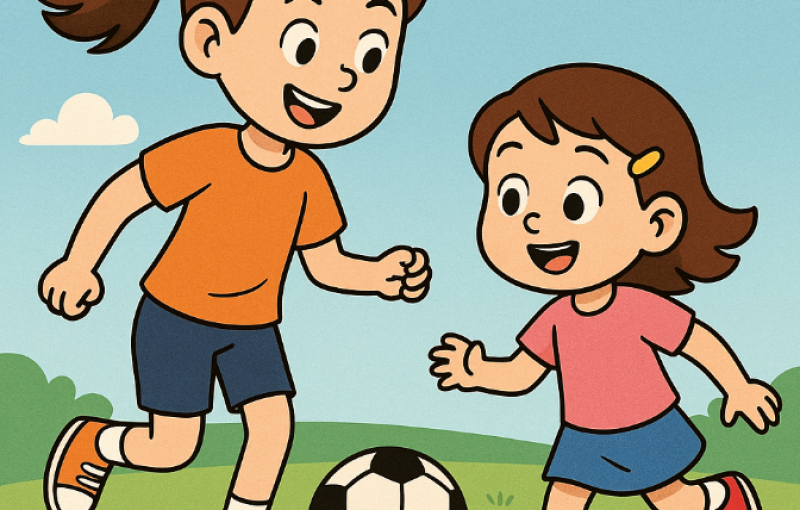
Why Siblings of Kids With Mental Health Issues Often Struggle Too
by Jon Scaccia May 6, 2025It sounds like a compliment. Maybe it’s said in passing—after a meltdown, during a parent-teacher conference, or when one sibling needs extra support. But for the “strong” sibling of a child with a mental health disorder, those words often come with an invisible weight.
They might be the sibling who doesn’t “act out,” who doesn’t “need as much.” But new research shows that underneath that calm surface, they may be drowning in distress, loneliness, and complex family dynamics. And it’s affecting more than just their mental health—it’s shaping how they connect with their families and how they carry emotional burdens into adulthood.
Let’s unpack the findings—and why this matters so much for families, teachers, and school psychologists.
What’s Going On With These “Strong” Siblings?
A new study published in PLOS ONE surveyed over 500 young adults in Italy—some of whom had siblings with mental health disorders and some who didn’t. Researchers wanted to understand how being a sibling in this situation affects mental well-being, family relationships, and sibling closeness.
They focused on a concept called sibling-focused parentification—when one sibling takes on adult-like caregiving roles for their brother or sister. That might mean being the peacemaker, the “third parent,” the emotional sponge. It’s common in families where a child has serious mental health needs.
Here’s the punchline: the more caregiving responsibilities these siblings took on, the more distress they felt—and the worse their relationships were with both their sibling and their parents.
The Hidden Emotional Cost
Let’s break it down:
- Kids who played the caregiver role reported higher anxiety, depression, and stress.
- They also felt less supported by their parents, possibly because those parents were (understandably) overwhelmed by their child with a mental illness.
- All of this added up to lower-quality sibling relationships, even though the caregiving sibling might have felt like they were doing the “right thing.”
This paints a hard truth: even well-intentioned caregiving can come at a cost when it’s not balanced with emotional support, boundaries, and space to just be a kid.
Girls and Younger Siblings Are Hit Hardest
One of the most eye-opening findings? Female and younger siblings were more likely to report high distress. This might sound familiar to parents and educators who see girls quietly managing emotions for everyone else, or younger siblings who try to “keep the peace” in complicated households.
It also lines up with social expectations: girls are often taught to be caretakers. In Mediterranean cultures especially, caregiving is seen as a feminine, moral duty. But in school? These kids may not be waving red flags. They may be quietly anxious, emotionally exhausted, and hiding the toll.
So What Can Help?
Here’s the good news: The study also found protective factors that helped these siblings cope better and maintain healthier relationships.
💬 Social Support
Having friends, teachers, or extended family to talk to made a huge difference. Kids who felt supported reported less distress—even if they were still taking on caregiving roles.
What this means for schools: Small moments of connection—a guidance counselor who checks in, a teacher who listens—can be game-changing for these students.
🌟 Positive Framing of Responsibility
Siblings who felt good about their caregiving—who saw themselves as helpful or part of a strong family team—reported stronger bonds with their parents and less distress. This doesn’t mean pretending everything’s fine, but rather creating opportunities for affirmation and meaning.
What this means for parents: Frame caregiving not as “just what’s expected,” but as something that’s noticed, appreciated, and balanced with care for them, too.
Real Talk: What This Means for Classrooms and Families
We often focus our mental health resources on the child in crisis—and for good reason. But this research is a critical reminder that siblings are part of that crisis, too. They are deeply affected, often overlooked, and quietly bearing emotional burdens.
If we want to create mental health-friendly schools and resilient families, we need to:
- Screen for sibling distress in school mental health assessments.
- Train educators and counselors to recognize signs of parentification.
- Normalize conversations about mental health at home that include all kids—not just the one who’s struggling.
Takeaway: Siblings Need Support, Too
It’s not just about preventing burnout—it’s about nurturing the full emotional lives of all children in a family. Kids who care for siblings with mental illness don’t need to be “the strong ones.” They need to be seen.
Practical Steps:
- 🏫 In schools: Include sibling questions in intake forms or mental health check-ins.
- 👨👩👧 At home: Make time for one-on-one connections with typically developing children.
- 🧠 In therapy: Encourage family therapists to explore sibling dynamics explicitly.
Let’s Talk About It 👇
Start the conversation in your school or community.
- What’s the biggest mental health challenge you see in your school right now?
- Have you seen students quietly taking on caregiver roles for a sibling?
- What’s one change your school could make to better support these “hidden helpers”?
If this blog resonated with you, share it with a fellow educator, parent, or counselor. These conversations are where change starts.
📬 Want more insights like this? Sign up for our newsletter@!
📣 Let’s give every child—not just the loudest voice—the support they deserve.
Leave a Reply